
Product Information
Concealment Towers/Structures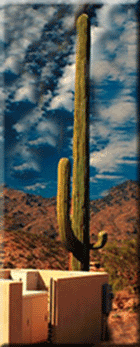
In order to satisfy some suburban sanctions, tower owners are being required to blend their technology into the surrounding environment by constructing towers that imitate nature or towers that imitate man-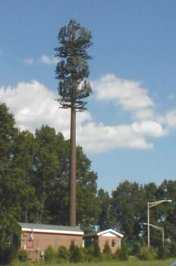 made structures. made structures.
Although imitation is the greatest form of flattery, early industry tree attempts never gained the admiration of their natural pine tree cousins or the community at large. One lone cellular tree was gingerly tucked next to a maternity store in a strip mall. With its obtrusive UV-faded bristles, shoppers would stand and gape, perhaps wondering if it was a grand monument to cleaner baby bottles everywhere.
New composite RF technology coupled with realistic weather resistant faux bark, branches and fronds have created a greater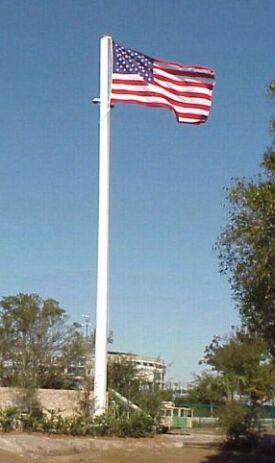 acceptance of trees by community boards. At a distance, they are aesthetically pleasing and can conceal up to six carriers. A desirous six-tenant corridor location would provide an annual income to the owner of $125,000.00 or more. The high structure and installation cost is a non-issue if it facilitates municipal approval and carriers are ready to ink a lease. acceptance of trees by community boards. At a distance, they are aesthetically pleasing and can conceal up to six carriers. A desirous six-tenant corridor location would provide an annual income to the owner of $125,000.00 or more. The high structure and installation cost is a non-issue if it facilitates municipal approval and carriers are ready to ink a lease.
However, single tenant tree structures can cost as much as three times more or greater than a traditional self-supporting tower or monopole, the most commonly installed structures, providing a limited or negative return on investment.
Concealing antenna systems in freestanding man-made structures can cost even more than trees, depending upon the application. 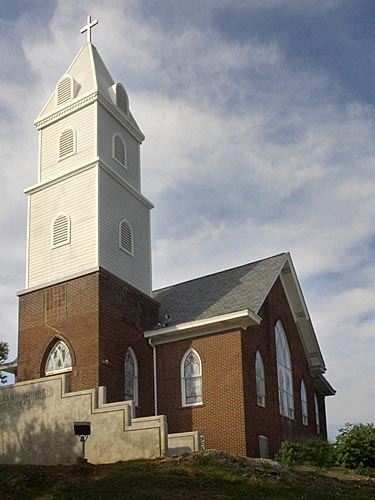 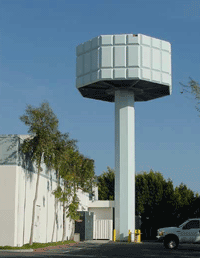 Architectural radomes covering monopole platforms are relatively easy to install and are the most cost effective zoning solutions. For rooftop concealment, panel facades are the ideal choice for screening applications. Architectural radomes covering monopole platforms are relatively easy to install and are the most cost effective zoning solutions. For rooftop concealment, panel facades are the ideal choice for screening applications.
Conventional concealment structures can be designed for every conceivable application so that even the most critical eye cannot tell that antenna systems are stealthed behind low loss RF transparent facades. From clock towers to church spires, signage and flagpoles, architectural concealment is only limited to the designer’s imagination and the owner’s site budget. A popular system in the Middle East, UK, America and other countries is a minaret tower linked to a mosque, allowing the faithful to call home after they have been called to prayers. Grain silo structures on many farm landscapes keep ’s rural areas in touch.
In the early 1990s, concealment costs were considerably higher and 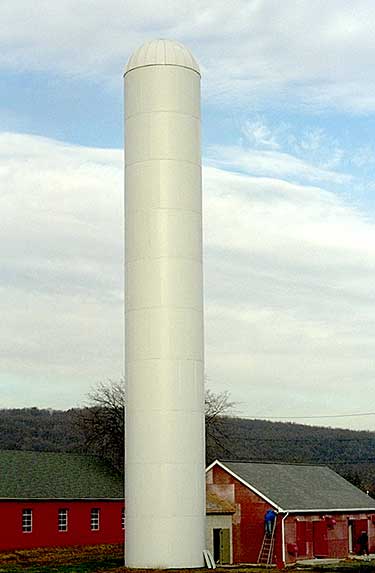 the absence of baselines presented problems when trying to project capital expenditures. The industry has matured, more products are available and pricing has stabilized, providing a more manageable cost. the absence of baselines presented problems when trying to project capital expenditures. The industry has matured, more products are available and pricing has stabilized, providing a more manageable cost.
 Your structure’s pricing is contingent upon a host of considerations, height, the number of carriers and site-specific design requirements being the most important. It is still difficult to project accurately a project concealment cost, but generalized averages are: Your structure’s pricing is contingent upon a host of considerations, height, the number of carriers and site-specific design requirements being the most important. It is still difficult to project accurately a project concealment cost, but generalized averages are:
| Concealment Structure |
Pricing |
Unit |
| Pine Trees |
$1,600 to $1,900
|
Linear Ft. |
| Palm Trees |
$1,200 to $1,700
|
Linear Ft. |
| Radome (Monopole, 3-Sector, Not Including Platform) |
$7,000
|
Each |
| Triangular Theme Poles (48") |
$1,100 to$1,200
|
Linear Ft. |
| Clock Towers |
$5,800 to $6,800 |
Linear Ft. |
| Panels |
$200 to $400
|
Linear Ft. |
| Tower Concealment (Not Including Structure) |
$40.00 |
Sq. Ft. |
| Rooftop Concealment (Includes Structural Framing) |
$75.00 |
Sq. Ft. |
| Sector Box Systems |
$9,000 to $10,000
|
Ea. Sector |
Pricing does not include freight, taxes, foundations and installation.
Pricing for your site-specific specialty structures and concealed towers is available from our valued concealment designers, manufacturers and distributors. In addition to your project’s requirements, you will be requested to provide the design wind speed for certain self-supporting structures. To identify the 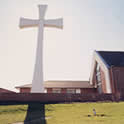 wind speed, please visit ABOUT WIND SPEEDS . Minimum basic wind speeds (MPH) are presented so that the Wireless Estimator user can identify the requirement in each county in all states, for estimating purposes only. Keep in mind that in each county or city there might be a special wind region or an increase in the basic wind speed to accommodate hurricane prone coastlines. In addition, the owner may require an increased wind speed to protect further his investment. wind speed, please visit ABOUT WIND SPEEDS . Minimum basic wind speeds (MPH) are presented so that the Wireless Estimator user can identify the requirement in each county in all states, for estimating purposes only. Keep in mind that in each county or city there might be a special wind region or an increase in the basic wind speed to accommodate hurricane prone coastlines. In addition, the owner may require an increased wind speed to protect further his investment.
Other structures such as a chimney, steeple or signage will be designed under jurisdictional building codes. be designed under jurisdictional building codes.
PRICING UPDATES ARE APPRECIATED
If you have recently completed a concealment project, please e-mail us at info@wirelessestimator with the following information:
- Type of structure
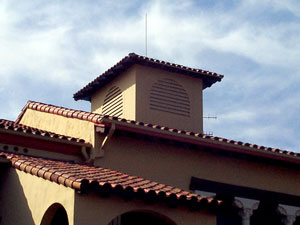
- Project Location
- Height of structure
- Special site conditions, if any
- Completion date
- Completed project cost
This information will only be used to provide additional information on concealment pricing. Your name and company information will not be published. If you have some helpful hints you would like to share with the industry, please send in a Lesson Learned.
Panels provide a cost effective alternative
Low loss RF transparent panels provide a quick and cost effective solution for antenna system screening enclosures. Averaging 2” in 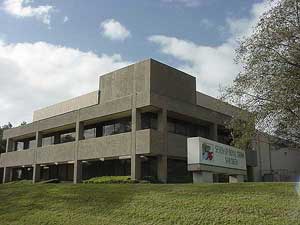 thickness and 1.5 pounds per square foot, most manufacturers stock their standard sizes, but custom dimensions are typically available within two to four weeks. thickness and 1.5 pounds per square foot, most manufacturers stock their standard sizes, but custom dimensions are typically available within two to four weeks.
Ready to assemble systems are offered for penthouse enclosures, sector boxes, parapet, wall and pilaster mounts. Faux finishes, from
Chicago brick to cedar shakes can rival the adjoining architecture. FRP (fiberglass-reinforced plastic) tubes, channels and angles are used to support the panels. Fiber bolts are used for panel and 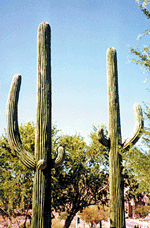 structural attachments. structural attachments.
Look for 1.5 dBm or less
Plastic composites, which comprise the greater portion of concealment materials, should have a maximum RF insertion loss of 1.5 dBm to be considered as invisible for industry acceptance. Your manufacturer should be able to provide you with testing results from an independent agency identifying that their products meet or are 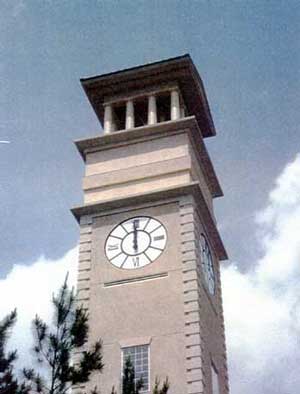 lower than the maximum insertion loss. Some composites can register as low as .25 dBm. lower than the maximum insertion loss. Some composites can register as low as .25 dBm.
When discussing your project with the manufacturer’s representative, make sure that you provide exacting information about the antenna types, downtilt and placement. Although many projects use an RF-friendly pultruded FRP for structural support, steel is sometimes used for project economies and can raise your insertion loss if antenna installation designs are modified at a later date. 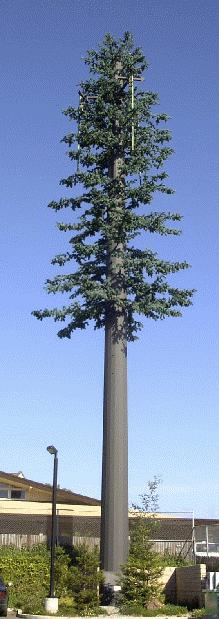
A new meaning for trunked systems
Some pine trees accommodate camouflaged antennas on the outside of the structure with coaxial lines being fed through the inside of the pole. Other offerings place the antennas on interior framework on an RF-compatible upper section of trunk. Few concealment companies manufacturer their own monopoles, but work closely with their selected manufacturer to ensure that the demanding design details necessary for the tree’s support structure are met.
|